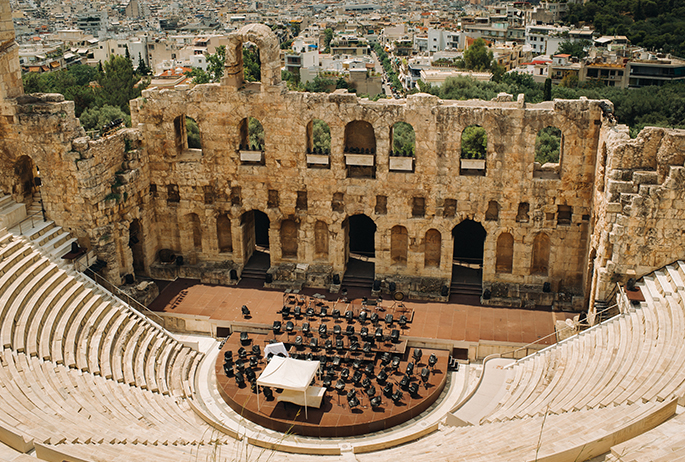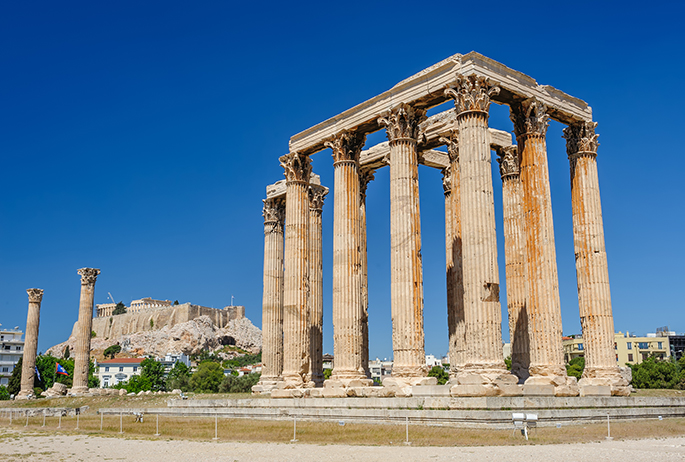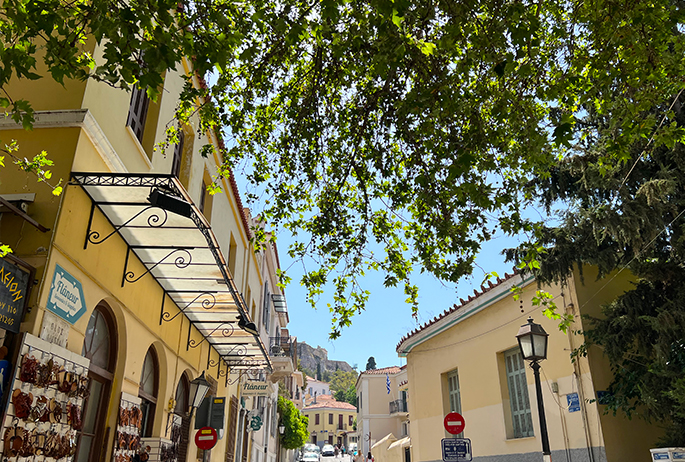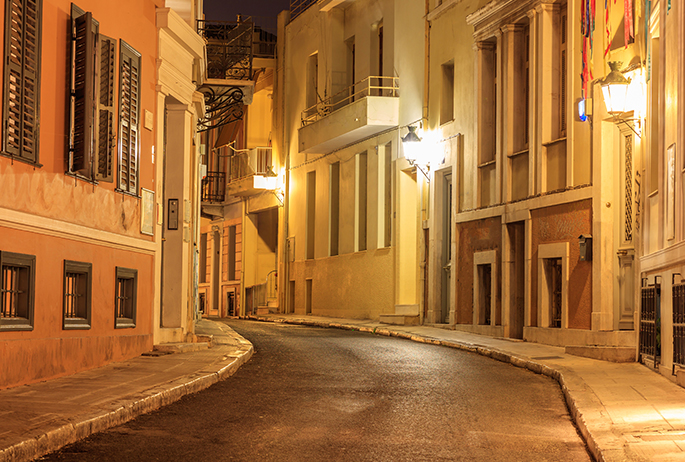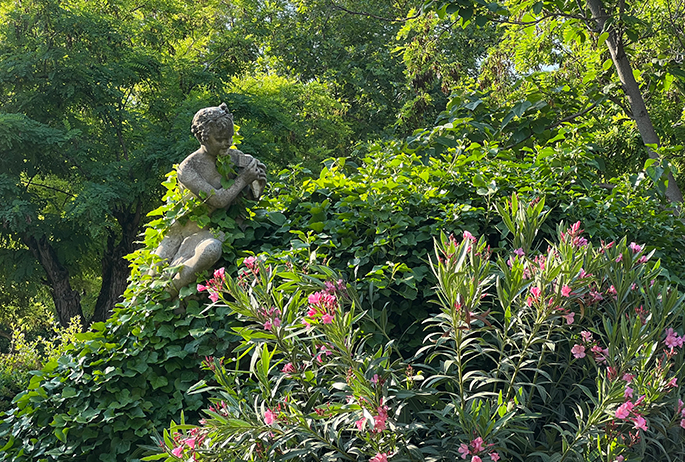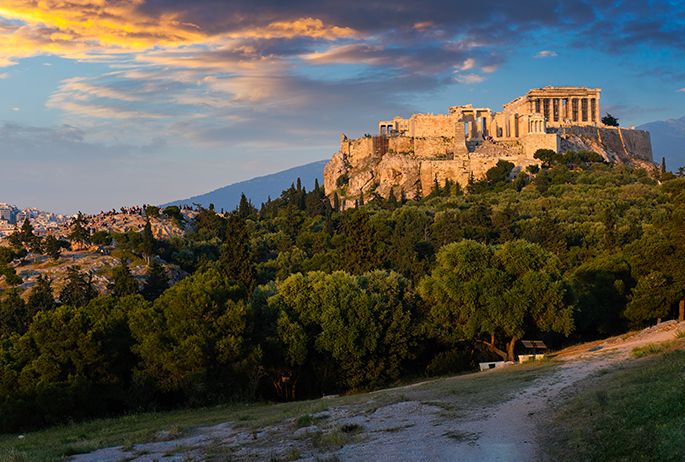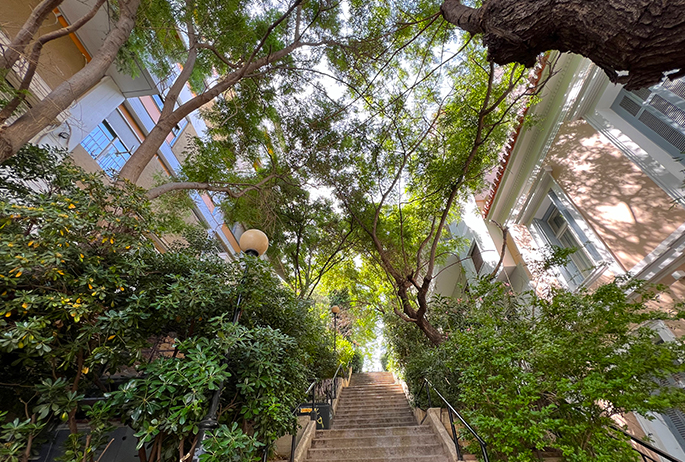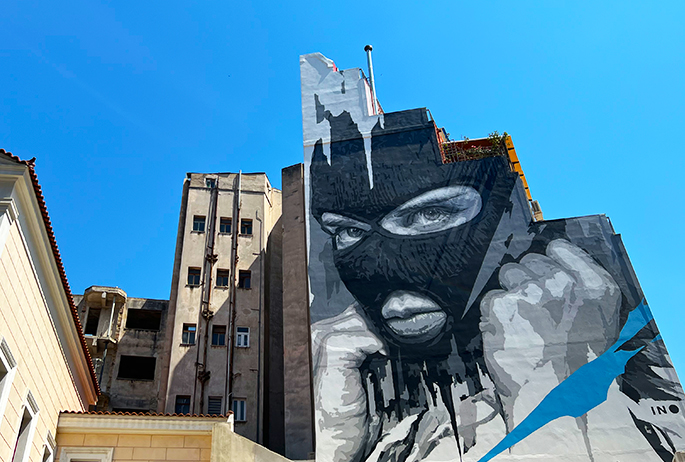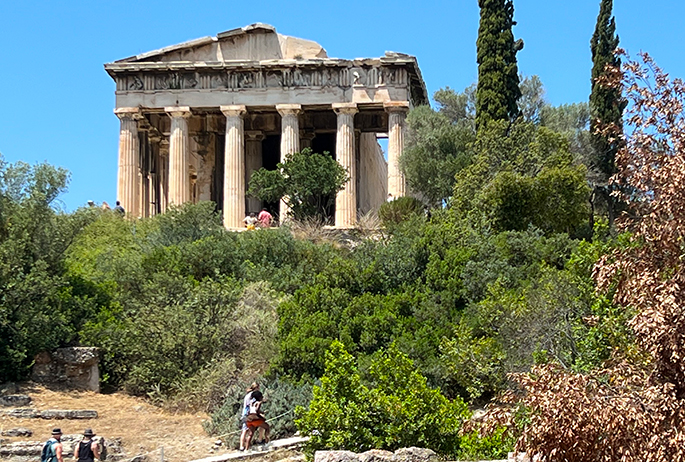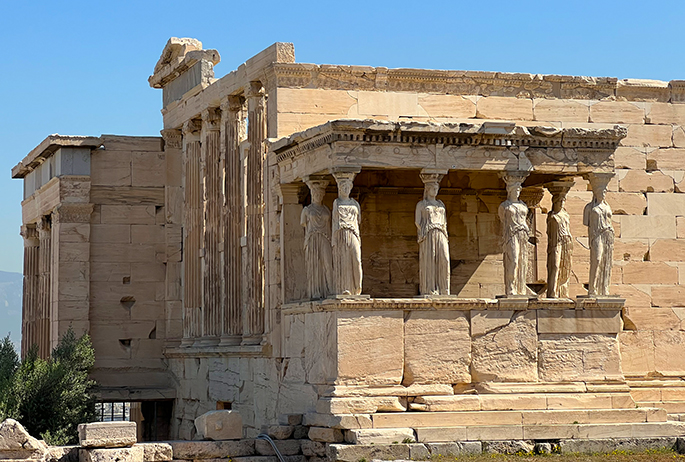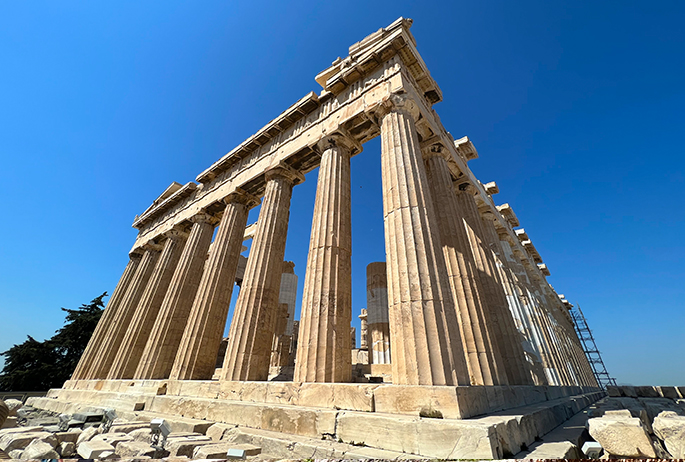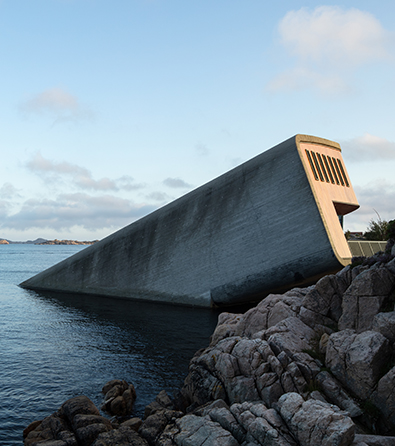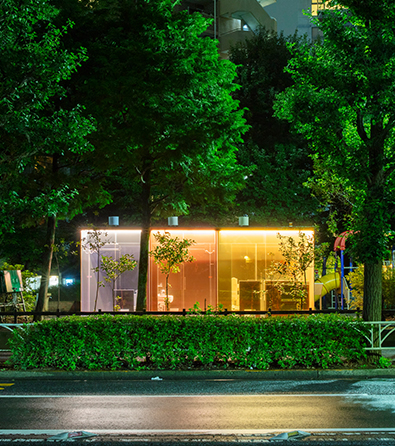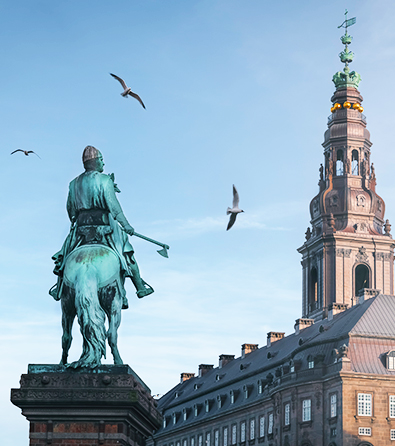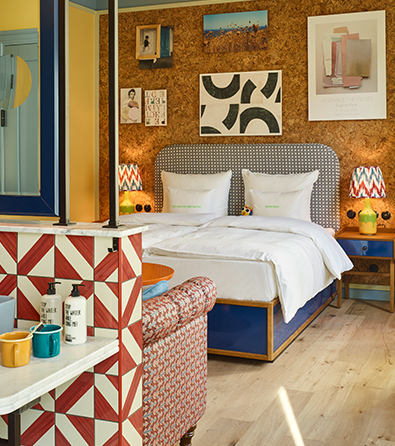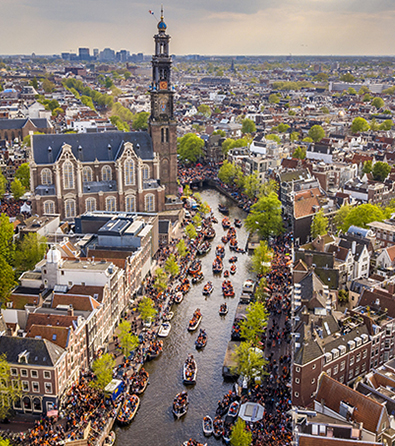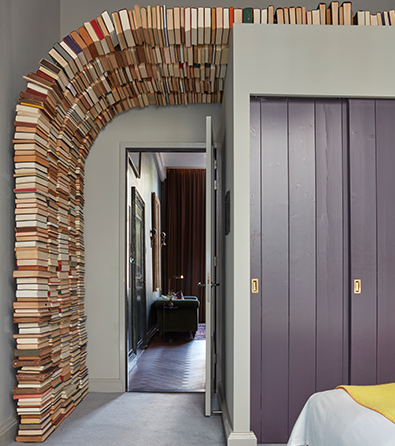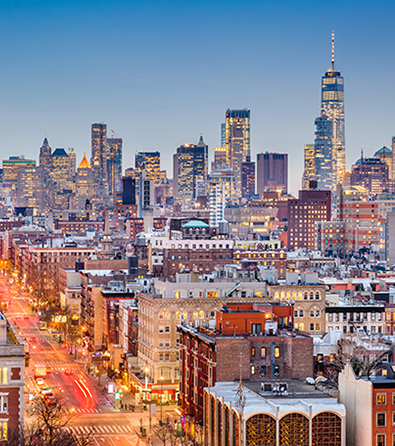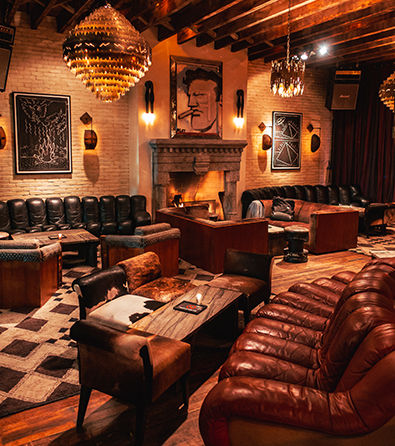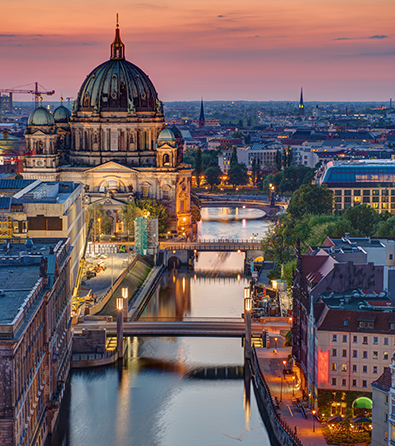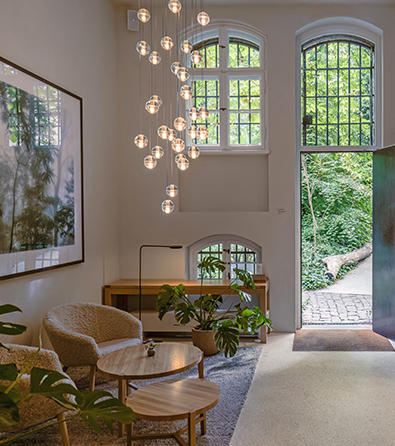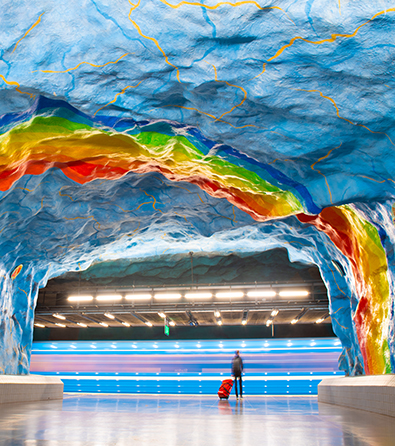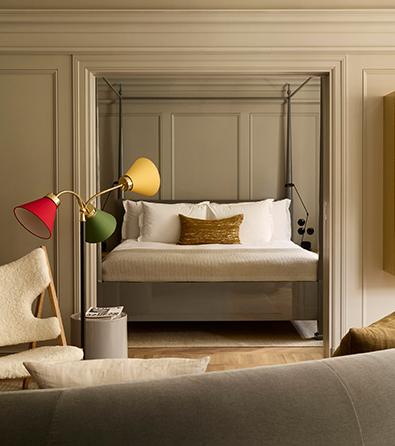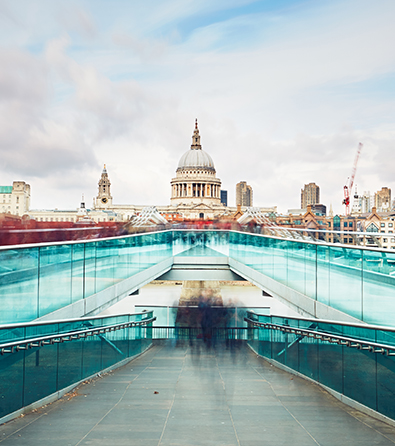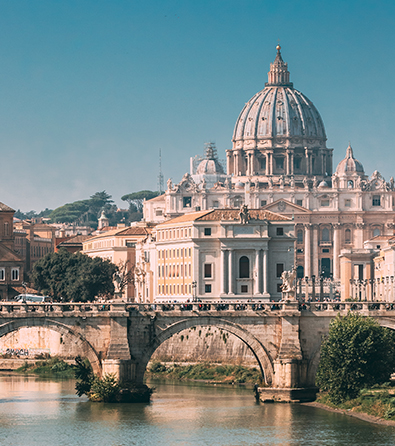Athens blends ancient landmarks with a lively contemporary scene. This guide helps you plan an art, design, and theater trip: the must-see museums and galleries, design shops and concept stores, landmark venues, and seasonal festivals, plus insider tips and a downloadable map.
To access our exclusive Athens Treasure Map, simply click the attached link and become a Culture Treasures member. The map pins every place in this guide and adds bonus cafés, boutiques and cultural venues. Planning your stay? Explore our guide to the best design hotels in Athens, along with our curated urban travel essentials and long flight essentials for a comfortable journey.
Historical Highlights:
Acropolis (Acropolis Hill / above Plaka)
Why go: Athens’ ancient citadel with the Parthenon, Erechtheion and its Caryatid Porch, and the Temple of Athena Nike, plus sweeping views over the city.
Tip: Go early or near sunset, book entry in advance, and wear good shoes for marble and uneven paths. The Caryatids on the porch are replicas; most originals are in the Acropolis Museum nearby.
The Acropolis crowns a limestone outcrop at the city’s center and gathers the finest monuments of classical Athens. The Parthenon honors Athena with monumental Doric columns and sculpted friezes. The Erechtheion blends sacred sites on the north side and is famed for the Caryatid Porch of six draped maidens. On the southwest bastion, the small Ionic Temple of Athena Nike celebrates the goddess as bringer of victory. A visit gives both a close look at ancient architecture and wide panoramas across modern Athens.
Acropolis Museum (Koukaki / Dionysiou Areopagitou)
Why go: World-class museum by architect Bernard Tschumi presenting the archaeology of the Acropolis, including five original Caryatids and a top-floor Parthenon Gallery aligned with the temple itself.
Tip: Visit after the Acropolis. Book timed tickets, wear shoes with grip for the glass floors over the excavations, and leave time for the terrace café with Parthenon views.
Opened in 2009 at the foot of the Acropolis, the museum is built on pilotis above an active archaeological site, visible through glass floors. Galleries trace the hill’s history from the slopes to the Archaic period and the Classical monuments. The Caryatid Porch is represented by five original figures, with the sixth in London. The Parthenon Gallery encircles a core volume to display the frieze in its original order using surviving originals complemented by casts, with panoramic views to the Parthenon across the way.
Ancient Agora of Athens (Monastiraki / Thissio)
Why go: Civic heart of classical Athens with the Stoa of Attalos and the remarkably preserved Temple of Hephaestus, plus great Acropolis views.
Tip: Go early and bring water. The Stoa of Attalos houses the site museum and offers shade. Consider the combo ticket if you are also visiting the Acropolis and other sites.
The Ancient Agora was Athens’ central marketplace and meeting ground, home to law courts, stoas, shrines, and everyday city life. The rebuilt Stoa of Attalos lines the east side and holds the Museum of the Ancient Agora, while the 5th century BCE Temple of Hephaestus crowns the west hill as one of Greece’s best preserved Doric temples. Philosophers, including Socrates, gathered here to converse, but formal schools like Plato’s Academy and Aristotle’s Lyceum stood elsewhere in the city. Entrances near Monastiraki and Thissio make it easy to pair with a walk through Plaka.
National Archaeological Museum (Exarcheia / Patission Street)
Why go: Greece’s largest archaeology museum, spanning prehistory to late antiquity. Highlights include the Antikythera Mechanism, the gold Mask of “Agamemnon,” the Artemision Bronze (Zeus or Poseidon), the Jockey of Artemision, Vaphio Cups, Cycladic figurines, and wall paintings from Thera.
Tip: Take the metro to Victoria or Omonia. Hours vary seasonally (often Tuesday 13:00–20:00, longer on other days in summer). Plan 2–3 hours and bring water.
Founded in the 19th century to house finds from across Greece, the museum organizes its holdings into major departments: Prehistoric (Neolithic, Cycladic, Mycenaean), Sculpture (Archaic to Roman periods), Vase & Minor Arts, and Metals, along with notable Egyptian and Near Eastern collections. Its address is 44 Patission (28 October) Street beside the National Technical University. Expect masterpieces from Mycenae and the Cyclades, bronze highlights salvaged from shipwrecks, and carefully curated galleries that trace Greek art and daily life across millennia.
Art Museums and Galleries:
EMST — National Museum of Contemporary Art (Koukaki / Former FIX Factory)
Why go: Greece’s national museum for contemporary art, presenting Greek and international work across installation, video, photography, and performance in the landmark FIX brewery building.
Tip: Book timed tickets and check current shows; pair with a walk along Dionysiou Areopagitou between the Acropolis and Koukaki.
EMST occupies the rehabilitated FIX brewery on Kallirrois Avenue and stages rotating exhibitions that map contemporary practice in Greece and beyond. Large, flexible galleries host survey shows and commissions, while public programs connect art to current social issues.
The Breeder (Metaxourgeio / Iasonos Street)
Why go: Pioneering gallery in Athens’s contemporary scene with a reputation for bold, discourse-driven exhibitions.
Tip: Hours are typically Tuesday–Friday 11:00–19:00 and Saturday 11:00–17:00; combine with nearby Rebecca Camhi for a compact gallery loop.
Founded in the early 2000s, The Breeder shows emerging and mid-career artists with a focus on politically and conceptually engaged work inside a converted industrial space in Metaxourgeio.
Bernier/Eliades Gallery (Thissio / Eptachalkou Street)
Why go: Longstanding contemporary gallery (est. 1977) with an international program near the pedestrian streets below the Acropolis.
Tip: Check which of its two cities (Athens/Brussels) a show is in; in Athens, stroll Apostolou Pavlou before or after your visit.
Bernier/Eliades has presented major figures and new voices for decades, anchoring the Thissio arts corridor with a consistent program of solo and thematic exhibitions.
Ileana Tounta Contemporary Art Center (Ampelokipi / Armatolon & Klefton)
Why go: One of Athens’s first large private spaces devoted to contemporary art, with two exhibition floors for ambitious shows.
Tip: Opening hours often run Tue–Fri afternoons into evening and Sat midday; verify the schedule before visiting.
Since the late 1980s, ITCAC has hosted Greek and international artists across media, pairing exhibitions with talks and publications in a purpose-built venue north of the city center.
Rebecca Camhi Gallery (Metaxourgeio / Leonidou Street)
Why go: Influential gallery housed in a neoclassical building, noted for international programs and close ties to the local scene.
Tip: Typical hours: Tue–Thu 12:00–18:00, Fri 12:00–21:00, Sat 12:00–16:00. Combine with The Breeder and cafés around Avdi Square.
Rebecca Camhi presents contemporary art across painting, photography, and installations, with curated projects that connect Athens to wider conversations.
State of Concept (Koukaki / Tousa Botsari)
Why go: Independent, non-profit institution (founded 2013) focused on critical, research-based exhibitions and public programs.
Tip: Limited hours, usually Wed–Fri late afternoon and Sat midday; check ahead.
State of Concept mounts timely shows, lectures, and reading groups that examine art’s role in politics and society, operating as a bridge between Athens and international discourse.
Eleni Koroneou Gallery (Thissio / Dimofontos & Thorikion)
Why go: Established gallery (founded 1989) showing international and Greek contemporary artists in a neoclassical Thissio space.
Tip: Usual hours: Tue–Fri 12:00–18:00, Sat 12:00–16:00; pair with a walk toward the Acropolis perimeter.
After two decades near the Acropolis, the gallery moved in 2009 to a larger Thissio location, continuing a program of exhibitions across painting, sculpture, and installation.
DESTE Foundation for Contemporary Art (Nea Ionia & Hydra Project Space)
Why go: Foundation founded by collector Dakis Joannou that presents exhibitions and publications in Athens and a seasonal project space on Hydra.
Tip: Athens programming and Hydra shows are seasonal or project-based, check current schedules. Hydra’s Slaughterhouse project space typically opens summer months.
DESTE’s Athens base in Nea Ionia hosts exhibitions and research projects, while the Hydra Project Space commissions a single-artist installation each summer in a converted slaughterhouse overlooking the sea.
Radio Athènes (Syntagma / Petraki 15)
Why go: Independent, non-profit space for experimental exhibitions, talks, readings, and publications in contemporary art and culture.
Tip: Hours and even locations can vary. The core space is at Petraki 15 near Mitropoleos Square, with occasional temporary venues. Check the current program before you go.
Founded in 2014 by Helena Papadopoulos, Radio Athènes collaborates with Greek and international artists, curators, and institutions to present research-driven projects across media. The space doubles as an occasional bookstore and produces public programs and editions, including book initiatives developed with partners such as the Goethe-Institut. Recent seasons have included satellite exhibitions while the Petraki 15 base continues to host shows and events.
NEON (Citywide / project-based venues)
Why go: Athens-based non-profit founded in 2013 by collector Dimitris Daskalopoulos that brings contemporary art into public space, free, large-scale exhibitions and commissions across the city rather than a fixed gallery.
Tip: Check the current program and venue details before you go; many projects are seasonal or site-specific (parks, historic buildings, cultural centers).
NEON produces exhibitions, commissions, and education programs that activate Athens’s landmarks and everyday places. Recent highlights include major shows at the former Public Tobacco Factory, augmented-reality works in the National Garden, and public installations and learning programs at cultural hubs such as the Stavros Niarchos Foundation Cultural Center. The organization also supports residencies and collaborative initiatives with international partners, using contemporary art to engage broad audiences
Athens Biennale (Citywide / various venues)
Why go: Greece’s flagship contemporary art biennial, large-scale exhibitions, performances, and talks spread across museums, historic buildings, and public spaces.
Tip: It’s project-based and citywide. Recent editions have run in autumn (late September–November/December). Dates and venues are announced a few months ahead, check the program before you plan.
Founded in 2005 as a non-profit and first held in 2007, the Athens Biennale frames each edition around a theme and brings together Greek and international artists. Past editions include AB1: Destroy Athens (2007), AB2: Heaven (2009), AB3: Monodrome (2011), AB4: Agora (2013), AB5–6: Omonoia (2015–17), AB6: Anti (2018), and AB7: Eclipse (2021, co-curated by Omsk Social Club and Larry Ossei-Mensah under artistic direction of Poka-Yio). Expect research-driven exhibitions, performances, workshops, and public programs that engage with Athens’s social and political life
Design:
Paraphernalia (Syntagma / Ioannou Paparrigopoulou Street)
Why go: Independent design and lifestyle shop with a curated mix of fashion, accessories, books, objects, and unconventional home goods from Greek and international makers.
Tip: Hours vary by day; pop in midweek and pair with nearby galleries and cafés around Mitropoleos and Klafthmonos Square.
Paraphernalia operates as a city-center concept store: clean, minimal displays; rotating edits; and a blend of practical objects and collectible design. Expect small-batch pieces, printed matter, and gift-ready items with a distinctive, design-driven point of view.
Forget Me Not (Plaka / Adrianou Street)
Why go: Design-led Greek souvenirs and gifts made by local makers, from ceramics and jewelry to textiles, prints, and smart home objects.
Tip: Head to 100 Adrianou Street mid-morning to avoid tour groups. Hours run daily and extend later in summer; pair with a stroll through Plaka and Anafiotika.
Opened in 2014, Forget Me Not curates contemporary Greek design with a focus on small-batch pieces and emerging creators. The shop balances playful, graphic items with craft-forward work, so you can find keepsakes that feel local and well made rather than generic souvenirs. Expect a bright, easy-to-browse space and frequent new edits tied to Greek materials and motifs.
MINŪ (Psyrri / Sarri 50)
Why go: Plant-filled concept store and café in a neoclassical space, blending design objects, greenery, and light bites, a stylish pause between Monastiraki and Thiseio.
Tip: Go off-peak (late morning or mid-afternoon). Grab a coffee in the garden courtyard, then browse housewares and small design pieces; check hours before you go.
MINŪ combines specialty coffee and an all-day menu with a curated shop of home goods—vases, textiles, tableware, planters, prints, and small accessories, sourced from Greek and international makers. The bright, indoor–outdoor layout puts plants and furniture at center stage, making it equal parts café, design store, and urban oasis.
El Greco Gallery (Halandri / Kifisias Avenue)
Why go: High-end furniture and lighting showroom combining 20th-century classics with contemporary design, representing leading European brands for home, office, and public spaces.
Tip: Head to 212 Kifisias Avenue in Halandri. Check hours before you go; weekdays run long on Tue, Thu, and Fri, and Saturdays are shorter.
El Greco Gallery has operated since 1987 and curates a broad mix of designer pieces and accessories. The showroom represents brands such as Vitra, Poltrona Frau, Flexform, Zanotta, USM Modular Furniture, Fritz Hansen, Carl Hansen & Søn, Artek, Walter Knoll, HAY, Alias, and Ingo Maurer. Expect expert guidance on modular systems and custom configurations alongside classics and new releases.
Theater, Dance and Music Venues:
Onassis Stegi (Neos Kosmos / Syngrou Avenue)
Why go: Athens’ hub for contemporary theater, dance, music, and ideas inside a landmark cultural center with two main stages and seasonal rooftop events.
Tip: Programs sell out, book ahead. In warm months, check for roof-terrace happenings with Acropolis views.
Onassis Stegi (formerly Onassis Cultural Centre) presents cutting-edge Greek and international work across performance, exhibitions, talks, and festivals such as Onassis Dance Days. The building houses two auditoria suited to large-scale productions and media work, plus exhibition and education spaces; a restaurant extends onto the rooftop terrace in summer.
Michael Cacoyannis Foundation (Tavros / Piraeus Street)
Why go: Purpose-built arts center hosting contemporary theater, film, concerts, exhibitions, and workshops.
Tip: Easy add to a Piraeus Street arts day. Check which hall your event uses, amphitheater, cinema, or black-box.
MCF is a modern cultural complex with multiple venues: a 330-seat theater, a 120-seat cinema, a flexible black-box, galleries, and rooftop spaces. Its year-round program ranges from new Greek stage work and international screenings to community and education projects.
National Theatre of Greece (Omonia & Panepistimiou / Ziller Building & Rex)
Why go: Greece’s leading state theater across six stages, from classics in grand historic halls to experimental work on intimate platforms.
Tip: Venues are split: the Main and Nikos Kourkoulos stages sit in the Ziller Building off Omonia; the Rex on Panepistimiou houses the Marika Kotopouli, Katina Paxinou, and Eleni Papadaki stages.
The National Theatre produces a full season in multiple venues, combining new Greek writing with international repertoire and research-driven projects. Recent renovations expanded technical capabilities while preserving historic interiors.
Megaron – The Athens Concert Hall (Ilisia / Vasilissis Sofias Ave)
Why go: Athens’ premier performing arts complex for dance, theater-in-concert, and music across four major halls, gardens, and the contemporary art initiative AnnexM.
Tip: The metro stop is “Megaro Moussikis.” In summer, look for garden events; inside, AnnexM hosts free exhibitions and cross-disciplinary projects.
Megaron presents international dance companies, Greek contemporary dance platforms, and cross-genre stage work alongside classical and contemporary music. The campus includes the Christos Lambrakis, Alexandra Trianti, Dimitris Mitropoulos, and Nikos Skalkotas halls, plus outdoor programming in the Megaron Garden.
Stavros Niarchos Foundation Cultural Center (SNFCC) (Kallithea / Coastal Park)
Why go: A cultural park designed by Renzo Piano that houses the Greek National Opera and National Library of Greece, with year-round free events, outdoor performances, and waterfront views.
Tip: Check the events calendar for open-air concerts, dance pop-ups, and family programs; combine with a visit to the Opera at Stavros Niarchos Hall.
SNFCC is a sustainable cultural campus with a 42-acre park, a sloping green roof, and public plazas that host festivals, screenings, and performances. It’s a civic hub where contemporary dance, opera, music, and community events meet in one destination.
Odeon of Herodes Atticus (Acropolis south slope / Dionysiou Areopagitou)
Why go: Ancient Roman theater with Acropolis views and summer performances by the Athens Epidaurus Festival, stone tiers, superb acoustics, unforgettable setting.
Tip: Book well in advance and bring a cushion and water. Entry is via the pedestrian Dionysiou Areopagitou. Note: the venue is slated to close for a multi-year restoration after the 2025 season, check current status before planning.
Built in AD 161 by Herodes Atticus, the Odeon (Herodeion) originally had a cedar-wood roof and today seats around 5,000 after 1950s restoration with Pentelic marble. It serves as a flagship festival stage for concerts, dance, and classical drama, making a performance here one of Athens’s signature cultural experiences.
Theater of Dionysus (Acropolis south slope / Dionysiou Areopagitou)
Why go: Birthplace of Greek drama where the plays of Aeschylus, Sophocles, Euripides, and Aristophanes were first performed, with marble front-row thrones still in place.
Tip: Entry is included with the Acropolis ticket (Slopes). Wear sturdy shoes for uneven stone and go early for shade. Look for the carved “Priest of Dionysus” seat in the front row.
The Theater of Dionysus sits on the south slope of the Acropolis and was dedicated to Dionysus, patron of theater. Early wooden seating was replaced by stone tiers in the 4th century BCE, and Roman-era renovations later added a higher stage and elaborate backdrop. At its height it held tens of thousands for the City Dionysia festivals. Today it is an archaeological site rather than an active venue, but you can walk the terraces, see the ornate prohedria (front-row) seats, and take in views up to the Parthenon.
With the interactive map below, you can compare all available accommodation options in the city and find the best prices from a variety of leading providers.
